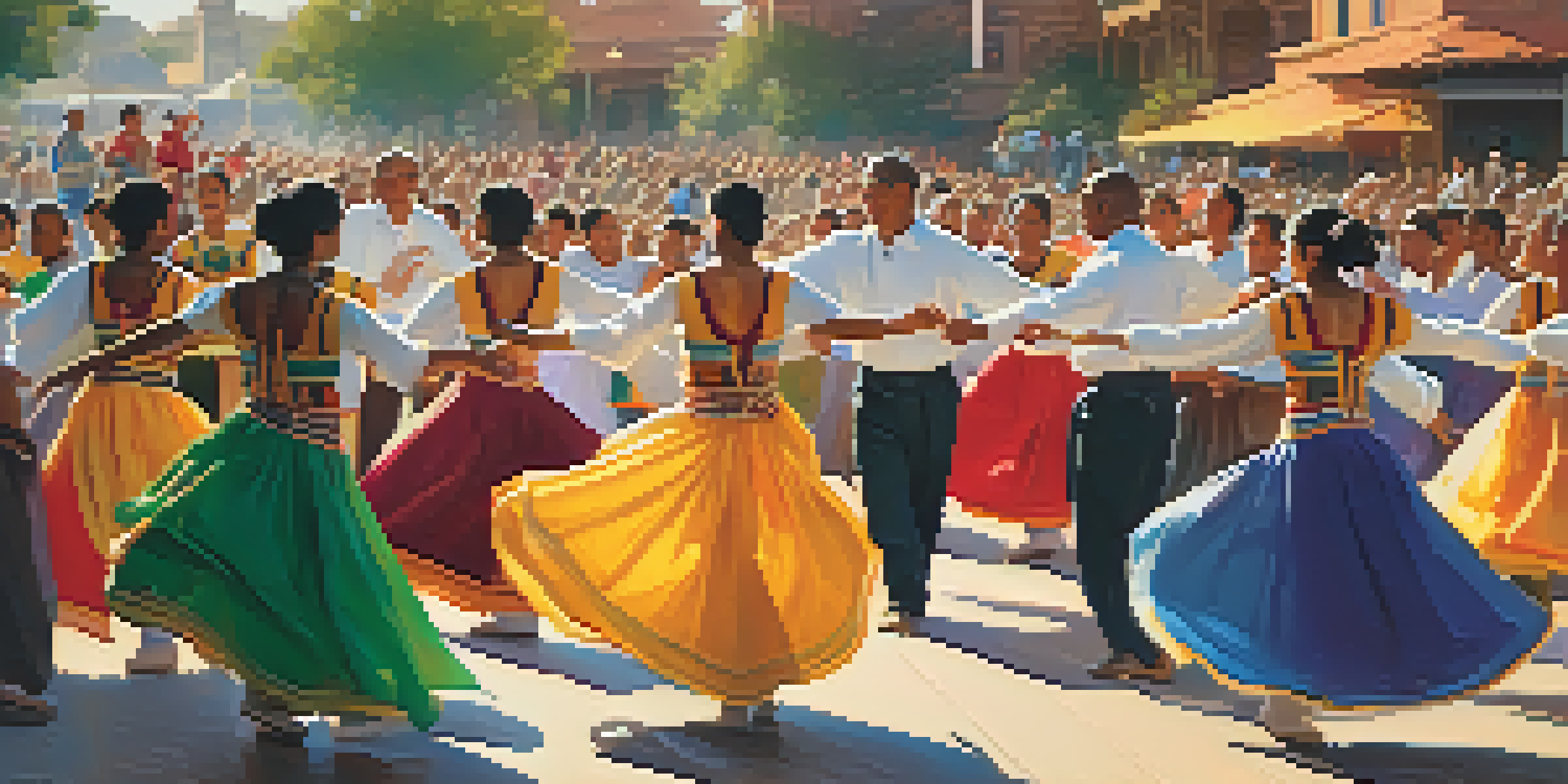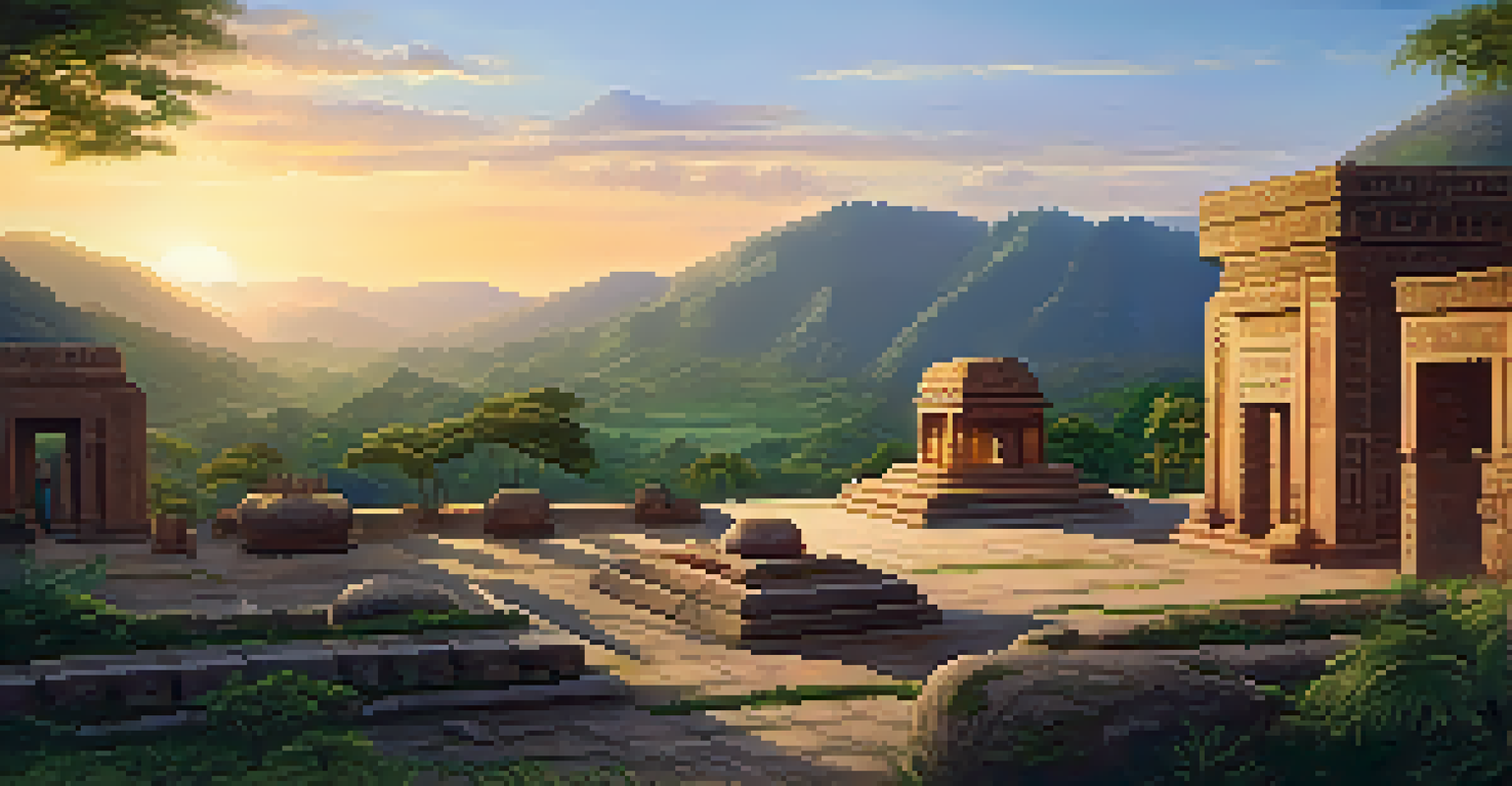Art and Cultural Preservation in a Globalized World

Understanding Cultural Preservation in a Globalized Context
Cultural preservation refers to the efforts made to safeguard a community's cultural heritage, including art, traditions, and languages. In our increasingly globalized world, where cultures often blend and sometimes clash, understanding the significance of this preservation is more crucial than ever. It’s about ensuring that future generations can connect with their roots, fostering a sense of identity and belonging.
Cultural preservation is not just about keeping traditions alive; it’s about ensuring that future generations can connect with their roots.
Globalization has facilitated the exchange of ideas and practices, which can be enriching, but it also poses a threat to unique cultural identities. As popular cultures dominate, local customs may be overshadowed, leading to cultural homogenization. For example, fast-food chains and global music trends can dilute traditional cuisines and local art forms, making cultural preservation a pressing concern.
To combat this, communities worldwide are taking action to showcase their unique cultural expressions. By promoting local artists, hosting festivals, and establishing cultural centers, they create spaces for cultural engagement and education. This proactive approach not only protects cultural heritage but also celebrates diversity in a globalized world.
The Role of Technology in Cultural Preservation
Technology has become a double-edged sword in the realm of cultural preservation. On one hand, it allows for the documentation and sharing of cultural artifacts and traditions through digital platforms, making them accessible to a broader audience. For instance, virtual museums and online archives enable people from different parts of the world to explore cultural treasures without leaving their homes.

On the other hand, the rapid pace of technological change can outpace the ability of some communities to adapt, risking the loss of traditional practices. Many indigenous cultures may find it challenging to maintain their heritage while navigating the digital landscape. It is essential to strike a balance between embracing new technologies and preserving the authenticity of cultural expressions.
Cultural Preservation is Vital
Safeguarding cultural heritage is essential for maintaining identity and diversity in an increasingly globalized world.
Social media also plays a pivotal role in raising awareness about cultural issues and promoting artistic expression. Artists can share their work with global audiences, fostering appreciation for their heritage. This not only enhances visibility but also encourages dialogue about the importance of cultural preservation in contemporary society.
Challenges Faced by Cultural Preservation Efforts
Despite good intentions, cultural preservation efforts often encounter various challenges. One significant hurdle is funding; many grassroots organizations struggle to secure the financial support needed to sustain their initiatives. Without adequate resources, it becomes difficult to maintain art programs, festivals, and educational workshops that promote cultural heritage.
Art is the most beautiful of all lies; it is a means to express and preserve our cultural identity.
Additionally, there can be a lack of awareness or appreciation for certain art forms, especially among younger generations. When traditional practices are not actively celebrated or integrated into daily life, they risk fading into obscurity. Engaging youth through educational programs and community involvement is vital for keeping these traditions alive.
Political instability and conflict can also jeopardize cultural heritage. In areas affected by war or oppression, art and cultural expressions may be suppressed or destroyed. This highlights the need for international cooperation and support to protect and promote cultural preservation in vulnerable regions.
The Importance of Community Engagement in Preservation
Community engagement is key to successful cultural preservation efforts. When local individuals and groups take ownership of their cultural heritage, they are more likely to protect and promote it actively. This grassroots approach fosters a sense of pride and belonging, encouraging people to share their traditions with others.
One effective strategy is to involve community members in the documentation and sharing of their cultural practices. By participating in storytelling sessions, workshops, and art exhibitions, individuals can connect with their heritage and inspire others to do the same. These experiences create lasting bonds that strengthen community identity.
Technology Affects Cultural Heritage
While technology aids in documenting and sharing culture, it also poses challenges for communities in preserving authenticity.
Moreover, partnerships with schools and educational institutions can play a significant role in fostering appreciation for local culture. Integrating cultural education into school curricula not only raises awareness but also empowers the next generation to appreciate and carry forward their cultural legacies.
Global Initiatives Supporting Cultural Preservation
Numerous global initiatives are dedicated to promoting cultural preservation, recognizing its importance in sustaining humanity's diverse heritage. Organizations such as UNESCO work tirelessly to safeguard sites of cultural significance, advocating for the protection of intangible cultural heritage like music, dance, and oral traditions. Their efforts help raise awareness on an international scale.
Another notable initiative is the World Monuments Fund, which focuses on preserving endangered cultural sites around the globe. By providing funding and expertise, they help restore and maintain these important landmarks, ensuring they remain accessible for future generations to appreciate. This international collaboration emphasizes the shared responsibility we all have in preserving cultural heritage.
Furthermore, cultural exchange programs encourage dialogue and understanding between different communities, allowing for the sharing of knowledge and practices. These programs not only enrich participants' experiences but also create a platform for showcasing unique cultural expressions, fostering a sense of global interconnectedness.
The Intersection of Art and Cultural Identity
Art serves as a powerful vehicle for expressing and preserving cultural identity. Through various forms, whether visual arts, music, or dance, communities can communicate their stories, values, and beliefs. This creative expression becomes a means of connecting with both the past and the present, reinforcing cultural identity.
For example, indigenous artists often draw upon traditional themes and techniques, creating works that reflect their heritage while also addressing contemporary issues. This blend of old and new not only preserves cultural practices but also ensures their relevance in today's world. By adapting their art to modern contexts, these artists can engage broader audiences while staying true to their roots.
Community Engagement Drives Success
Active participation from local communities is crucial for effective cultural preservation, fostering pride and continuity in traditions.
Moreover, art can serve as a catalyst for cultural dialogue, allowing for the exchange of ideas and experiences. When diverse artistic expressions are shared and celebrated, they contribute to a richer understanding of our shared humanity, promoting empathy and respect for different cultures.
Future Prospects for Art and Cultural Preservation
Looking ahead, the future of art and cultural preservation in a globalized world holds both promise and challenges. As awareness grows about the importance of cultural heritage, more individuals and organizations are stepping up to support preservation initiatives. This collective effort can lead to innovative solutions that bridge tradition and modernity.
New technologies will continue to play a crucial role, allowing for more effective documentation and dissemination of cultural practices. As communities harness the power of digital platforms, they can share their stories and traditions with the world, ensuring their cultural legacies endure. However, it is essential to approach these tools thoughtfully, prioritizing authenticity and community input.

Ultimately, the success of cultural preservation will hinge on our ability to foster appreciation for diversity and inclusivity. By valuing and celebrating the myriad of cultural expressions that exist, we can create a world where art and culture thrive, enriching our global community for generations to come.